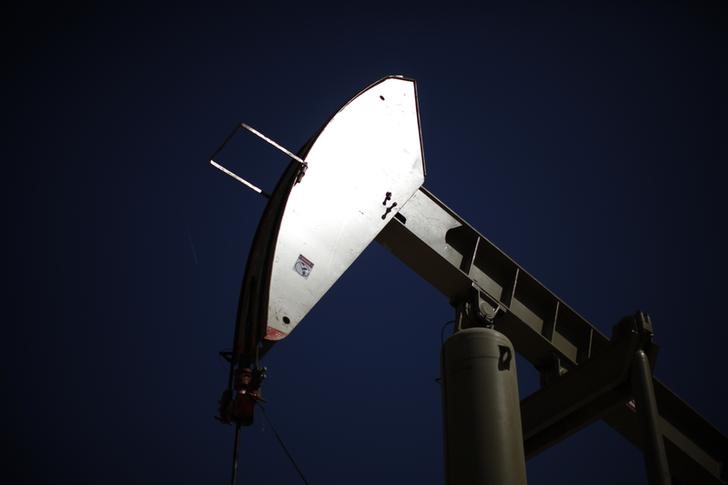(Reuters) - Oil traders from Texas to Louisiana braced on Tuesday for supply disruptions as a potential tropical storm developing in the U.S. Gulf of Mexico threatened to hit refining and production centers with wind and rain later this week.
The Louisiana Offshore Oil Port, the largest privately owned crude storage terminal in the United States, suspended vessel offloading operations early on Tuesday morning ahead of the storm, but said it expected no interruptions to deliveries from its hub in Clovelly, Louisiana. [nFWN1JH0MO]
Exxon Mobil Corp (NYSE:XOM), Phillips 66 (NYSE:PSX), and Motiva Enterprises have said the potential storm has not yet impacted operations at its facilities. Royal Dutch Shell (LON:RDSa) on Tuesday said some offshore well operations had been suspended but production was currently unaffected.
The weather system in the Gulf of Mexico has a 90 percent chance of becoming a tropical storm in the next day or two, the U.S. National Hurricane Center said in its latest advisory.
Currently located about 265 miles (430 km) south of Morgan City, Louisiana, the weather system is expected to approach the southwest Louisiana coast late on Wednesday and move inland over western Louisiana and eastern Texas on Thursday, the hurricane center said.
The storm could strengthen slightly before it reaches the coast, the NHC said. It extended warnings for the storm westward to High Island, Texas, and for heavy rainfall across most portions of the Gulf Coast.
The weather system now has maximum sustained winds of 40 miles per hour (65 kilometers per hour), the Miami-based forecaster said.
"Satellite imagery shows that the center of the disturbance is gradually becoming better defined, and it is likely that the system will become a tropical or subtropical cyclone later today," the NHC said on Tuesday.
The storm, currently designated as "Potential Tropical Cyclone Three," could also cause tornados later on Tuesday from south-central Louisiana to the western Florida Panhandle.
Crude oil prices for physical delivery along the U.S. Gulf Coast were relatively stable on Tuesday morning, but cash gasoline prices rose as traders expected refineries along the Gulf Coast to get hit with heavy rains, which may result in flooding.
Mars Sour crude was last discussed around a $1.60 a barrel discount to U.S. crude futures, little changed from Monday, while Louisiana Light Sweet crude, the light sweet benchmark, was unchanged at a $1.95 a barrel premium to West Texas Intermediate (WTI).
Meanwhile, prompt U.S. Gulf Coast conventional gasoline traded at a 2 cents per gallon discount to the RBOB futures contract, its strongest level in four months.
Meanwhile, southeast of the Gulf of Mexico, tropical storm Bret is expected to begin weakening later Tuesday and dissipate on Thursday.
That storm, located about 315 miles (505 km) east of Curacao and packing maximum sustained winds of 45 miles (75 km) per hour is moving west-northwest and will continue to proceed across the southeastern Caribbean Sea, the hurricane center said.
The Gulf of Mexico is home to about 17 percent of U.S. crude output and 5 percent of dry natural gas output daily, according to the U.S. Energy Information Administration. More than 45 percent of the nation's refining capacity is located along the U.S. Gulf Coast, which also is home to 51 percent of total U.S. natural gas processing capability.
WeatherBell Analytics LLC forecast 11 to 13 named tropical storms in the 2017 Atlantic Hurricane Season, according to a May outlook issued by the company.

The Atlantic hurricane season runs from June 1 through Nov. 30, and has an average of 9.6 named storms, 5.9 hurricanes and 2.3 intense hurricanes every year. The median number of named storms between 1981 and 2010 was 12 per year, according to Colorado State University's Tropical Meteorology Project.